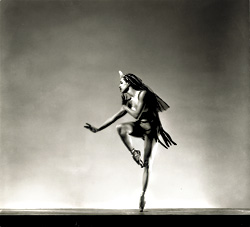After years of arcane French vocabulary and mysterious Russian surnames, ballet began to become American in the 1930s, in part thanks to Maria Tallchief, both an enrolled Osage and a ballerina. Touring with the Ballet Russe, she refused to Russify her name, and in a world that didnt think Americans had enough soul to perform ballet (Americans were only supposed to tap dance and slap their fannies, she said), she carried her Native American identity proudly. Later she became a favorite muse of George Balanchine, originating roles in his Orpheus and Firebird and becoming a central player in the development of the New York City Ballet. Sandra Johnson Osawa and Yasu Osawas new documentary Maria Tallchief, opening here as part of the Northwest Indigenous Film Festival, includes generous helpings of interviews as well as performance footage culled from early television and backstage films. They give us a thoughtful view on the artist and her particular history.
Tue., Oct. 30, 7 p.m., 2007




